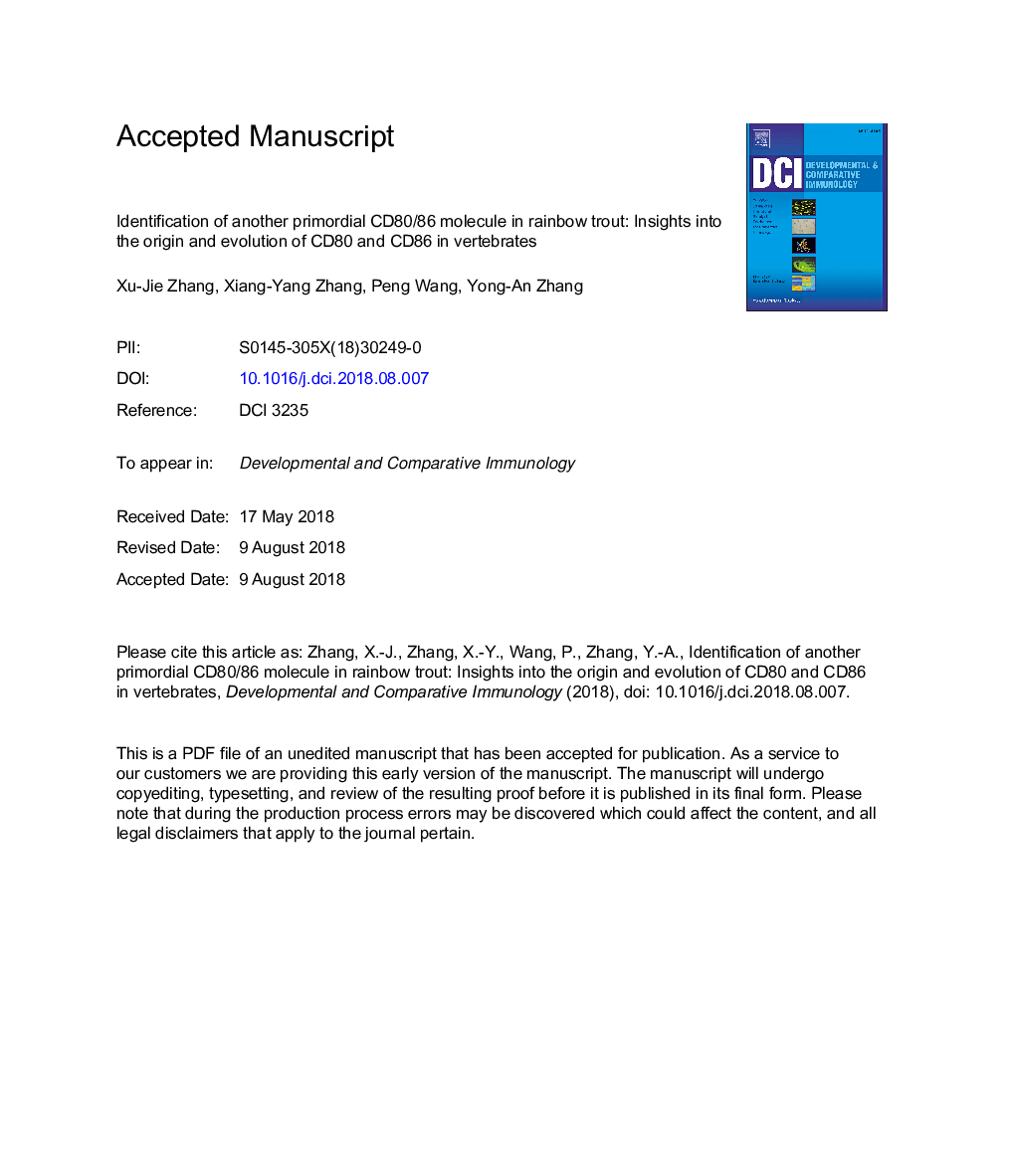| Article ID | Journal | Published Year | Pages | File Type |
|---|---|---|---|---|
| 8497596 | Developmental & Comparative Immunology | 2018 | 32 Pages |
Abstract
In mammals, the binding of distinct costimulatory ligands CD80 and CD86 to their receptors is essential for optimal T cell activation. Previous studies have shown that only a single CD80/86 gene exists in rainbow trout (termed rtCD80/86A) and other teleost fish, suggesting that CD80 and CD86 arose by gene duplication in the tetrapod branch, after the separation of fish and tetrapods. However, in this study, another CD80/86 gene has been cloned from rainbow trout, termed rtCD80/86B. The sequence identity between trout CD80/86 is significantly higher than that between CD80 and CD86 in tetrapods, indicating that CD80 and CD86 underwent divergent evolution in vertebrates, especially in tetrapods. Gene synteny analyses showed that the CD80 and CD86 genes are closely located in the same chromosome in tetrapods. However, CD80/86 genes are located in two distinct chromosomes in rainbow trout and Atlantic salmon, suggesting that salmonid CD80/86 genes arose by the salmonid-specific whole-genome duplication (WGD) event. Expression analysis showed that rtCD80/86A was more abundant and inducible than rtCD80/86B in various tissues, indicating the important role of rtCD80/86A in trout immunity. Interestingly, we found that head kidney B cells showed higher expression level of rtCD80/86A and rtCD80/86B when compared with the other leukocytes, suggesting a potential role for trout B cells as antigen-presenting cells (APCs).
Keywords
Related Topics
Life Sciences
Biochemistry, Genetics and Molecular Biology
Developmental Biology
Authors
Xu-Jie Zhang, Xiang-Yang Zhang, Peng Wang, Yong-An Zhang,
